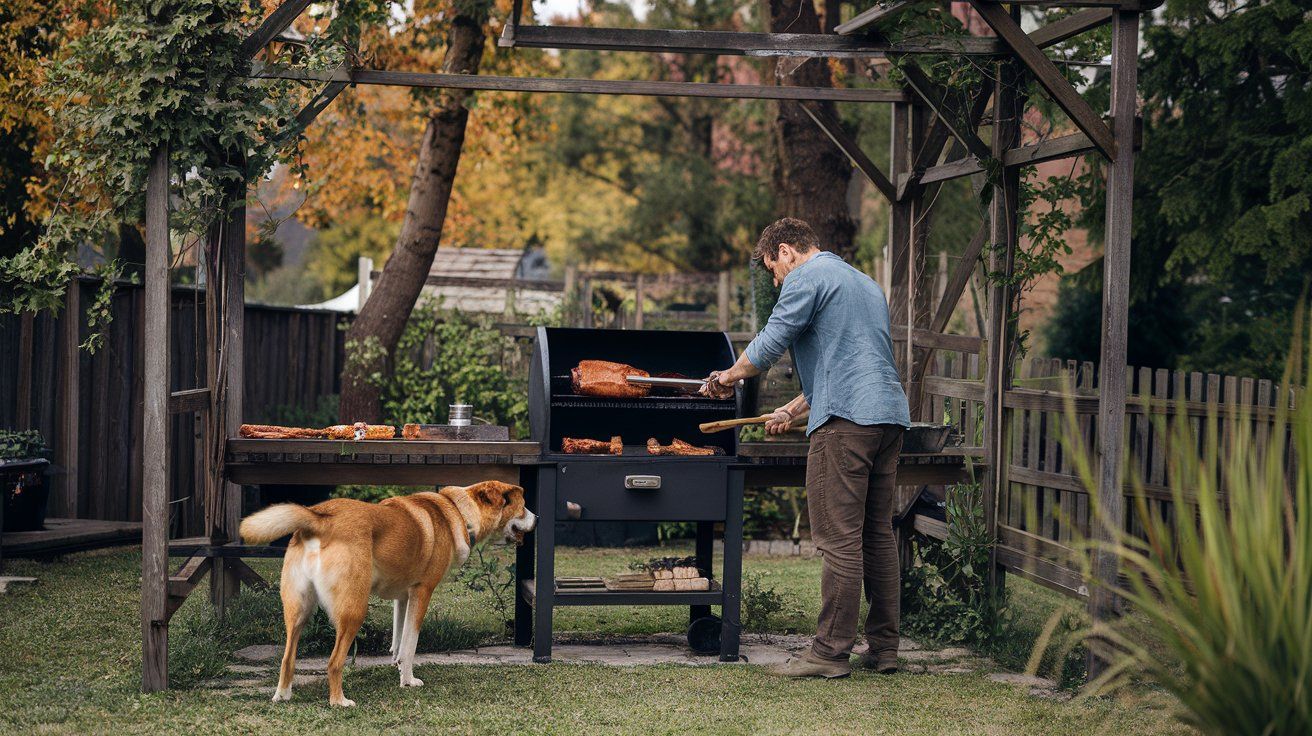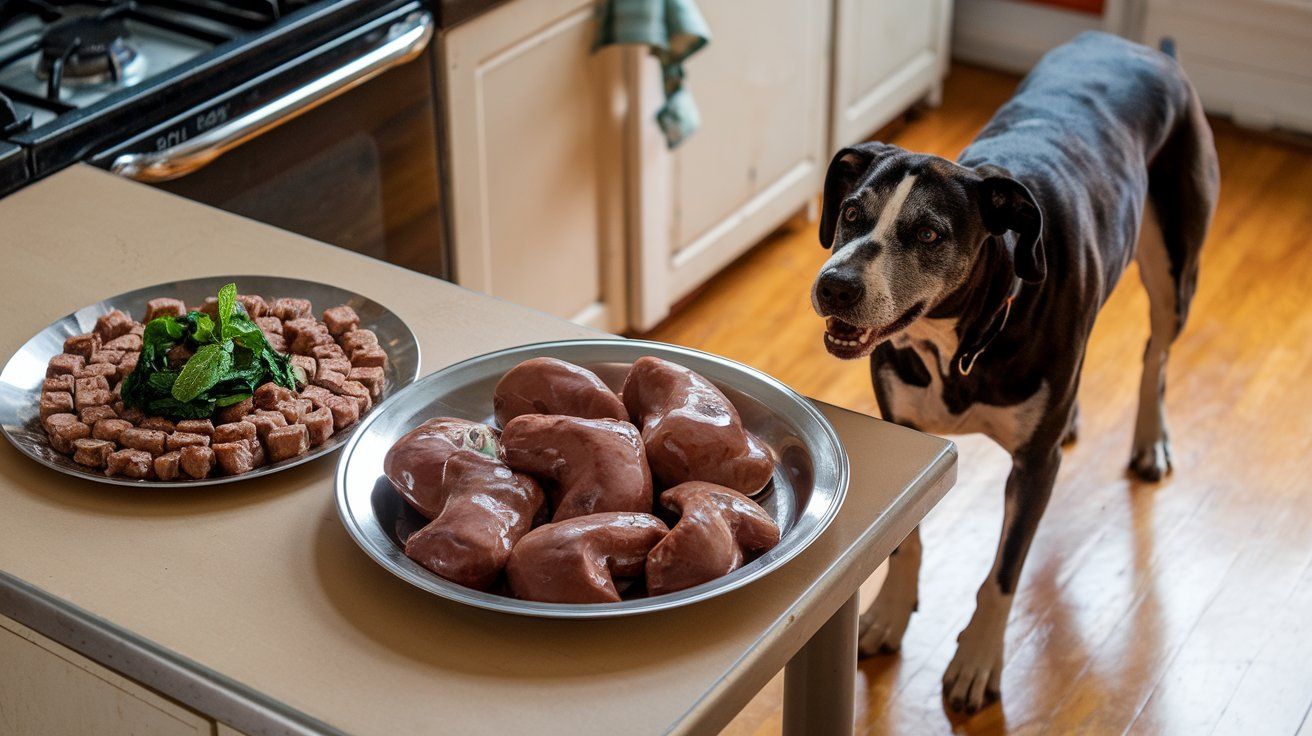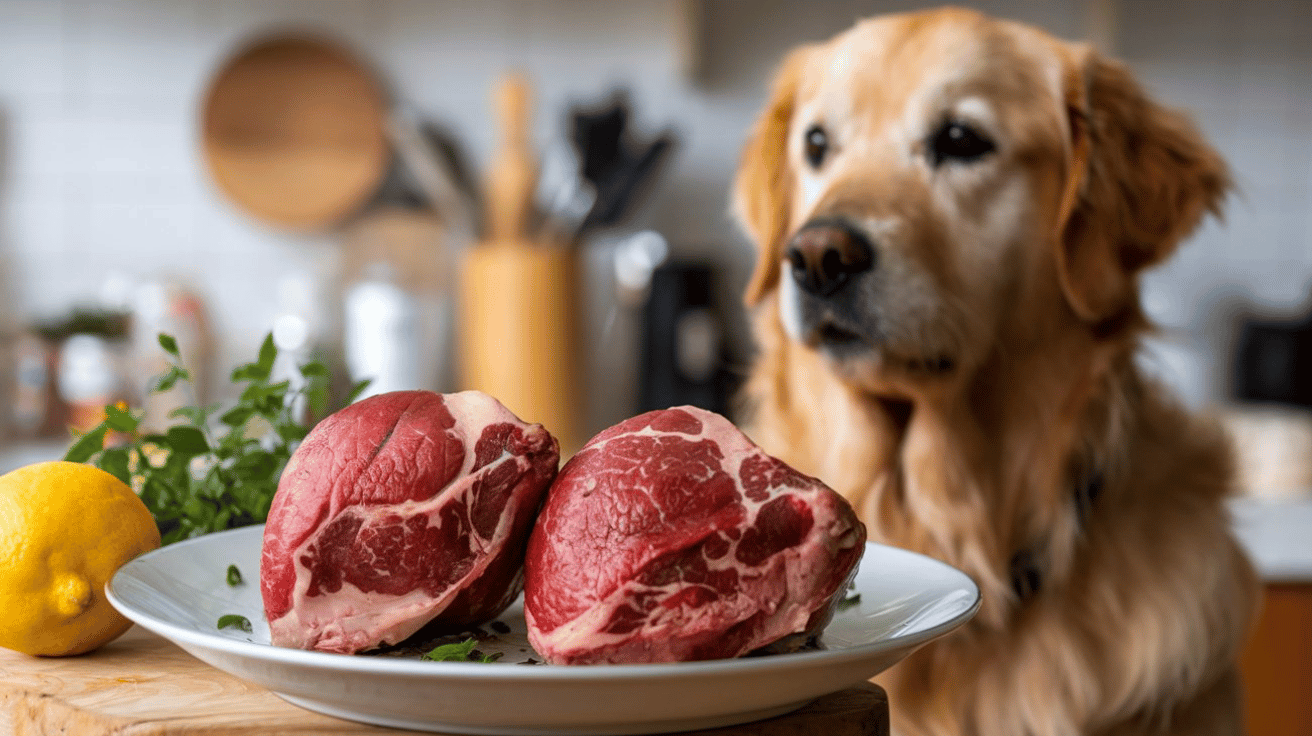Can Dogs Eat Freezer-Burned Meat?
Yes, Dogs can eat freezer-burned meat, but there are some considerations. Freezer burn occurs when air reaches the meat’s surface and dehydrates it, changing its texture and flavour. Although this process does not make the meat unsafe, it does reduce its quality and can affect its taste.
What is Freezer Burn, and How Does it Affect Meat Quality?
When meat is not stored correctly in a freezer, it can develop freezer burn. This condition arises when air reaches the meat’s surface, leading to dehydration and discolouration. This usually results in the meat becoming dry, turning a greyish hue, and taking on a leathery texture. Despite these changes, freezer burn does not make the meat unsafe to eat; it remains edible if it has been kept at 0°F or below, which is about -18°C.
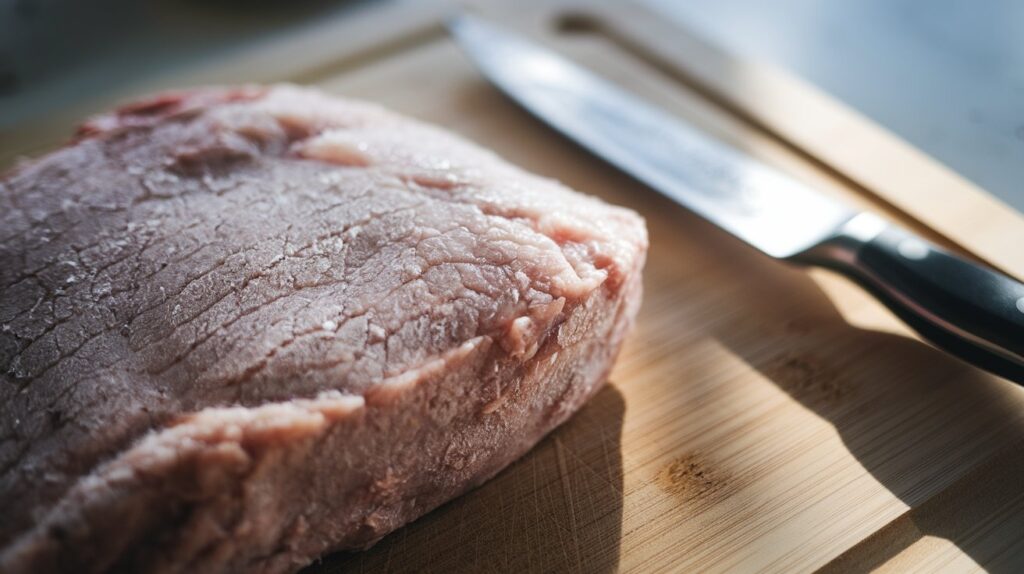
However, the quality and texture of the meat suffer significantly. The loss of moisture impacts the tenderness and juiciness of the meat, making it less appealing for meals. The flavour can often be adversely affected, which might discourage some people from using it in their cooking. To better understand the implications of feeding raw bones to dogs, it’s essential to consider how different meats, even those with freezer burn, affect animal health and nutrition.
Freezer burn is typically caused by several factors:
- Poor freezer maintenance: If the freezer is not working correctly or is frequently opened, it can create fluctuations in temperature that contribute to freezer burn.
- Inadequate packaging: Meat needs to be wrapped tightly and securely. Using materials that don’t protect against air exposure increases the risk of freezer burn.
- Incorrect storage temperatures: Setting the freezer at a temperature higher than 0°F (-18°C) will likely accelerate freezer burn development.

Below is a table showing practical ways to prevent freezer burn and ensure the longevity of meat quality:
| Prevention Tips | Description |
|---|---|
| Use airtight packaging | Vacuum-sealed bags or tightly wrapped plastic help keep air out. |
| Maintain stable freezer temps | Set and check the freezer’s temperature regularly to ensure it stays at 0°F or below. |
| Organize the freezer space | Maintain stable freezer temps. |
By understanding and preventing freezer burn, you can preserve the taste and texture of your meats, making them more enjoyable to eat even after long-term storage. For more insights on proper food storage and avoiding common mistakes, consider reading through comprehensive guides from reliable sources like USDA’s Freezing and Food Safety guidelines or FoodSafety.gov’s FoodKeeper App, which provides valuable tips on keeping your food safe and delicious.
Risks and Safety Considerations of Freezer Burn
When it comes to feeding your dog, you might wonder if beef kidney or other meats, like freezer-burned meat, are a safe option. Freezer burn occurs when air reaches the meat’s surface, causing dehydration and oxidation. This doesn’t make the meat unsafe for consumption, but it does change its quality and texture. Here’s what you need to know about giving your furry friend this type of meat.
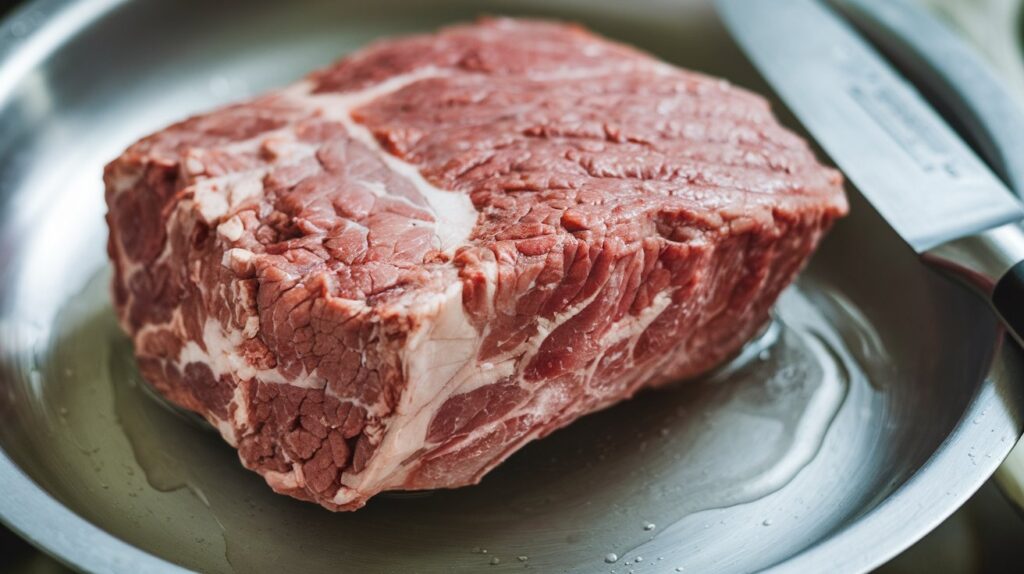
Quality Impact: Freezer burn may result in dry, leathery meat. While this doesn’t pose a health risk, it can make the meat less palatable and harder for dogs to digest. The loss of moisture and nutrients can also diminish the food’s nutritional value, which is essential for your dog’s health.
Safety Checks: Before offering any meat to your dog, it’s crucial to check its temperature and overall condition. Meat that has been improperly stored at over 40°F (4°C) or emits an off odour should be discarded to prevent foodborne illnesses. According to a study by the National Institutes of Health, properly storing meat is crucial to avoiding spoilage and ensuring it remains safe for consumption.

Handling and Storage: Improper storage often leads to freezer burn. Ensuring your freezer is at the right temperature and the meat is packaged correctly can minimize the risks. Use airtight containers or heavy-duty freezer bags to protect the meat from air exposure.
Precautionary Measures: If you’re uncertain about the meat’s safety, it’s best to err on the side of caution and throw it away. Feeding your dog compromised meat isn’t worth the potential health risks.
Here’s a simple table to help you determine if freezer-burned meat is safe for your dog:
| Condition | Action |
|---|---|
| Off odours, slimy texture | Safe to feed after cooking |
| Off odors, slimy texture | Discard to avoid risk |
| Stored above 40°F (4°C) | Discard to prevent illness |
In summary, while freezer-burned meat is not inherently dangerous, it can be less nutritious and appealing. Always prioritize your dog’s dietary needs and safety by thoroughly checking the meat’s condition before feeding. This ensures your dog enjoys their meals without any health complications while keeping them tasty and free from freezer burn for extended periods. For more tips on optimizing freezer usage, consider visiting Freezer use or exploring the four steps to food safety provided by FoodSafety.gov.
Handling and Storage of Freezer Burned Meat
When it comes to storing meat, ensuring it remains fresh and free from freezer burn is crucial. Freezer burn occurs when air reaches the meat’s surface, leading to dehydration and oxidation that can adversely affect both its texture and flavour. To combat this, store your meat in airtight containers or freezer bags to minimize air exposure. This simple step is your first defence against the degradation of quality.
It’s essential to maintain your freezer at or below 0°F (-18°C). At this temperature, the meat remains frozen solid, slowing down the deterioration process significantly. Regular checks on your freezer door gasket are also advisable to ensure it’s properly sealed and does not allow outside air to enter.

For those looking to enhance their food preservation, investing in a vacuum sealer might be worthwhile. Vacuum sealers remove air from the packaging, providing an additional layer of protection against freezer burn. This method not only extends the shelf life of your meat but also helps in maintaining its taste and texture.
| Storage Method | Benefit |
|---|---|
| Airtight Containers | Minimizes air exposure |
| Freezer Bags | Convenient, reduces freezer burn |
| Vacuum Sealing | Optimal air removal, prolongs freshness |
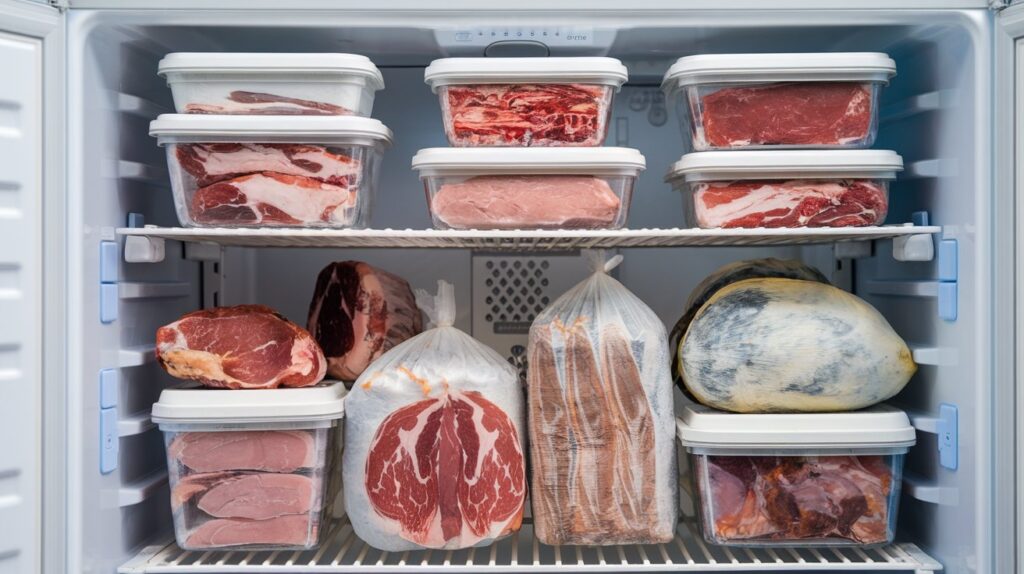
By following these guidelines, you can significantly reduce the chances of freezer burn, ensuring that your meat remains as fresh and flavorful as possible. Always remember, the key to optimal meat preservation lies in how well you can shield it from air exposure. For more information on food preservation techniques, you might want to check out this recent study on meat preservation techniques which highlights the latest methods in maintaining meat freshness and quality.
Feeding Freezer Burned Meat to Dogs
Feeding freezer-burned meat to dogs can be a practical way to avoid waste, provided the meat has been stored correctly and is deemed safe for consumption. Freezer burn does not make meat unsafe; it typically just affects the texture and flavour of the meat, which are less significant concerns for dogs than humans.
However, it’s crucial to prioritize your dog’s health and safety. If there is any doubt about the meat’s quality or storage conditions, it’s better to err on caution and not feed it to your dog. Even if only slightly off, spoiled meat can contain harmful bacteria that could make your pet sick.

When handling meat to be fed to your dog, always use clean utensils and surfaces to prevent cross-contamination. This includes washing hands thoroughly before and after handling the meat and ensuring that all cutting boards and dishes are sanitized.
It’s also wise to consult a veterinarian if you plan to regularly feed your dog freezer-burned meat. A vet can provide guidance based on your dog’s specific health needs and dietary requirements, ensuring that the diet contributes positively to its well-being.
Here’s a table summarizing the key points on feeding freezer-burned meat to dogs:
| Key Considerations | Description |
|---|---|
| Safety of meat | Only feed meat that has been stored safely and shows no signs of spoilage. |
| Handling precautions | Use clean utensils and maintain hygiene to avoid cross-contamination. |
| Consultation with vet | Seek professional advice to ensure the diet is suitable for your dog. |
Adhere to these guidelines to safely include freezer-burned meat in your dog’s diet while keeping their health and safety a top priority.
Alternatives to Freezer Burned Meat
Several healthy options can ensure your dog receives the nutrients it needs without the potential drawbacks of compromised meat when considering alternatives to freezer-burned meat for its diet.
One of the simplest alternatives is to use fresh or frozen beef that has not been affected by freezer burn. Fresh meat provides essential proteins and nutrients in its most beneficial form, and properly stored frozen beef can be just as nutritious.
While some owners might be tempted to add spicy foods for dogs to enhance flavour, it is generally not recommended. Dogs have different digestive systems, and spices like chilli powder or Tajin can cause gastrointestinal distress. Instead, focus on plain, unseasoned meats to ensure they receive all the necessary nutrients without any risk of discomfort or harm.
Additionally, exploring alternative protein sources can diversify your dog’s diet and reduce dependency on traditional meats. Canned meat is a convenient option, often fully cooked and ready to serve, which can be particularly helpful for busy pet owners. It’s also typically processed under strict standards to ensure safety, making it a reliable choice. Other cooked meats, purchased pre-cooked or prepared at home, can also serve as healthy alternatives. These options can be tailored to suit your dog’s taste and any specific dietary needs.
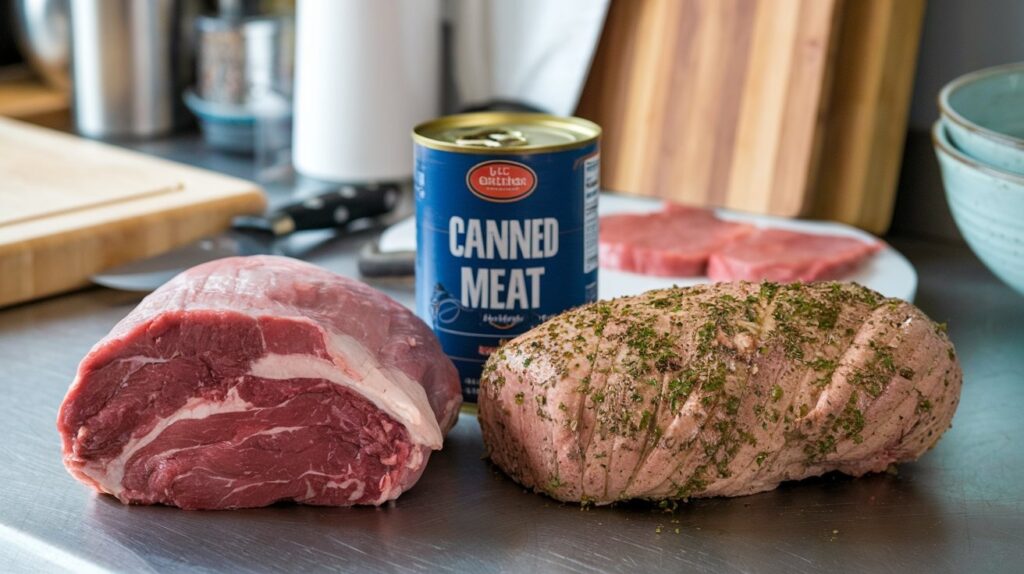
Before making any significant changes to your dog’s diet, it’s beneficial to consult with a veterinarian or a pet nutritionist. These professionals can provide tailored advice based on your dog’s health, age, and nutritional needs, ensuring that any dietary adjustments contribute positively to their overall health.
Below is a table that outlines these alternatives and their benefits:
| Alternative Options | Description | Benefits |
|---|---|---|
| Fresh or properly frozen meat | Meat not affected by freezer burn. | High nutritional value. |
| Canned meat | Pre-cooked and easy to store. | Convenience and safety. |
| Cooked meat | Home-cooked or purchased cooked meats. | Customizable to diet needs. |
By choosing the right alternatives to freezer-burned meat, you can maintain a healthy diet for your dog, ensuring they get the nutrition they need without any risks associated with poor-quality meat.
Final Considerations for Your Dog’s Diet
When managing your dog’s diet, it’s critical to prioritize their health and safety. The quality of the meat you feed your dog plays a significant role in their overall health. If there is any uncertainty about the safety or quality of the meat, it is safest to err on the side of caution and discard it. Feeding your dog spoiled or low-quality beef can lead to health problems ranging from minor digestive issues to more severe foodborne illnesses.

Taking proactive steps to prevent freezer burn is essential to avoid these risks. This includes proper storage and handling of your dog’s food. Freezer burn can degrade meat quality by causing dehydration and oxidation, but this can be minimized through practical practices. Ensuring that your freezer is set to the right temperature (0°F or -18°C) and using airtight containers or vacuum-sealed bags can help maintain the meat’s quality.
Below is a table with practical tips to help ensure the quality and safety of your dog’s food:
| Tips for Preventing Issues | Description |
|---|---|
| Check storage conditions | Keep the freezer at the correct temperature and ensure it is not overfilled. |
| Use proper packaging | Opt for airtight containers or vacuum-sealed bags to minimize air exposure. |
| Regularly inspect food | Look for signs of freezer burn or spoilage before feeding it to your dog. |
By following these guidelines, you can help safeguard your dog’s health by providing high-quality, safe food. Ensuring you handle and store their meat correctly prevents potential health issues and contributes to a more nutritious and enjoyable diet for your pet.


